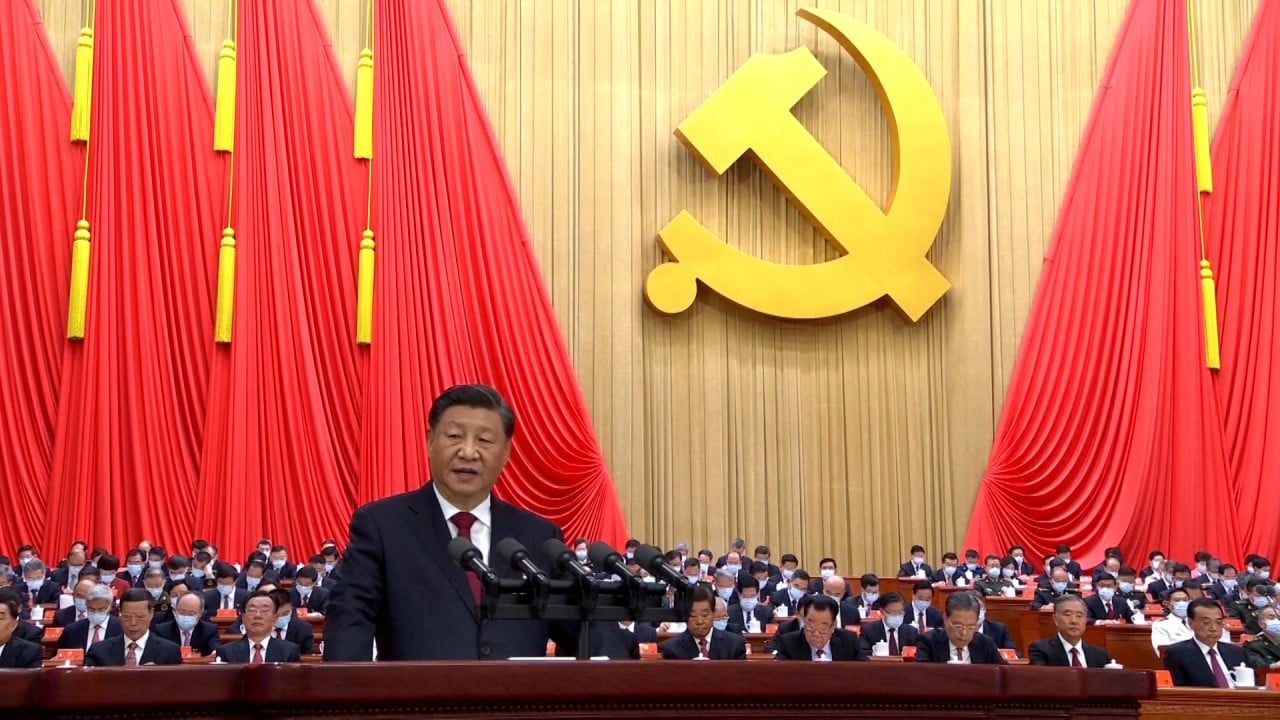
Xi Jinping says China must brace for ‘dangerous storms’ while fostering new economic growth engines
- In his political report to the party congress that kicked off on Sunday, President Xi Jinping warns of mounting challenges facing the nation’s economy
- Message largely reiterates everything China is already doing, without signalling significant changes in economic and coronavirus policies, according to one analyst
President Xi Jinping says China must strive for sustainable, quality economic growth while imposing risk controls and bolstering self-reliance in critically important areas such as food security and technological innovation.
“We must, therefore, be more mindful of potential dangers, be prepared for the worst-case scenarios, and be ready to withstand high winds, choppy waters and even dangerous storms,” Xi told about 2,300 delegates at the Great Hall of the People who are going to select a new team of Chinese leaders over the coming days.
Major objectives for the next five years, as outlined in the report, include achieving breakthroughs in high-quality development; realising greater self-reliance and strength in science and technology; and fostering a higher-standard open economy.
The goals include building up supply-chain resilience, raising productivity, ensuring that enough food is available to feed the world’s most populous nation, expanding domestic demand, and narrowing the wealth gap between various regions, including rural and urban areas.
The most eye-catching part is the Chinese leader’s explicit worries
Xi, who is also general secretary of the Communist Party, said regional conflicts, the coronavirus pandemic and a sluggish global economic recovery are among the challenges that China is facing.
Meanwhile, the nation is looking to cultivate a green and low-carbon economy, necessitating changes to its industrial structure, energy mix and transport methods.
“The most eye-catching part is the Chinese leader’s explicit worries, and it portends a harsher external environment over the next five years,” said Ding Shuang, chief Greater China economist at Standard Chartered Bank. “China’s potential growth may need to be reassessed … and it is hard to set specific growth targets under such uncertainties.”
China’s gross domestic product (GDP) more than doubled in the past decade to 114 trillion yuan (US$15.85 trillion) last year, with its share of global GDP rising by 7.2 percentage points to 18.5 per cent.
However, the nation’s economic growth has slowed significantly in recent years, averaging 5.1 per cent for 2020-21 and reaching only 2.5 per cent in the first half of this year, largely as a result of deteriorating relations with the Western countries and pandemic-related disruptions.
Beijing’s heavy-handed zero-Covid strategy, often associated with lockdowns and mobility restrictions, has sparked outcries from foreign investors and small businesses across the country. Meanwhile, its push for common prosperity, along with its abrupt crackdown on major Chinese internet companies last year, have led to concerns among entrepreneurs that the role of private firms in the economy is being weakened.
‘Opening up is China’s basic state policy’ but scrutiny to stay
Chinese officials earlier denied that the common-prosperity push would result in Robin Hood-style redistribution. And Xi earlier this year called for the use of a “red and green” traffic-light system to “regulate and guide the healthy development of all types of capital”, including private.
On Sunday, Xi also said China should foster new economic growth engines in sectors such as information technology, artificial intelligence, biotechnology, new energy, new materials, high-end equipment and environmental protection.
“[We’ll] increase the income of low-income people, expand the middle-income group, and standardise income distribution and the wealth-accumulation mechanism,” he added.
Scott Kennedy, a senior fellow with the Washington-based Centre for Strategic and International Studies think tank, who is currently visiting China, said that Xi’s speech largely reiterated everything China is currently doing.
“If you think there need to be significant changes in policies toward Covid, the economy, the relations with the United States and the West – you are probably disappointed,” he said.



